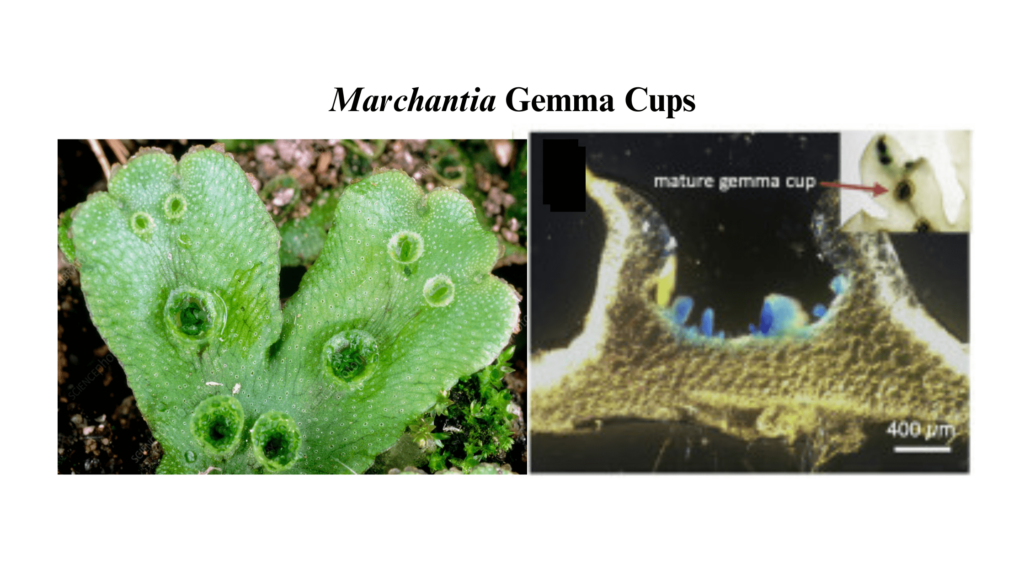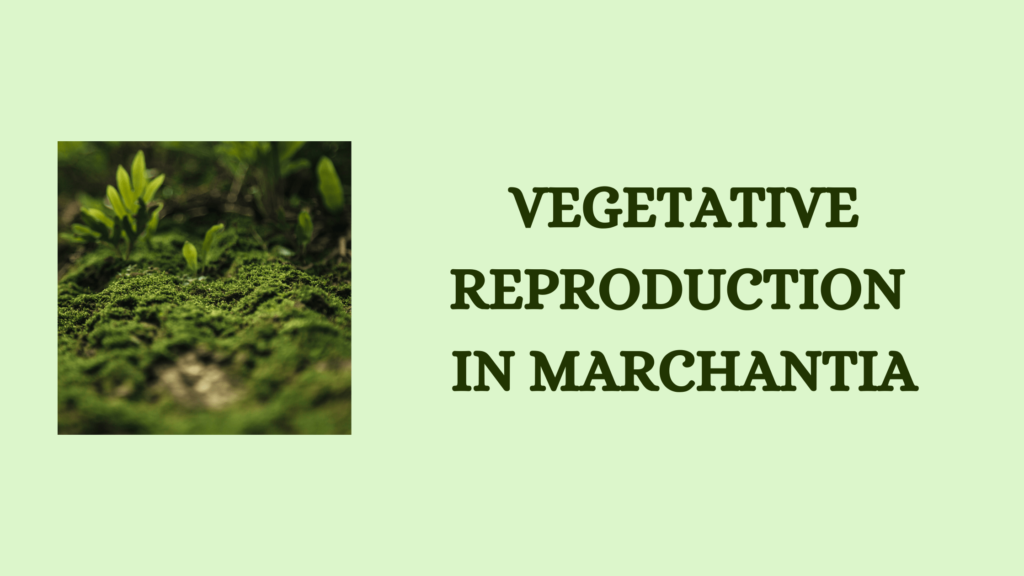Explain the Structure and Function of Gemmae in Marchantia
The vegetative reproduction in Marchantia occurs in three ways- fragmentation, adventitious branches, and formation of gemmae cups.
Types of Vegetative Reproduction in Marchantia
Fragmentation
Here, the older posterior portion of the Marchantia thallus decays due to aging. At this time, when the decaying reaches the upper dichotomy of the thallus, the lobe gets separated. Each of these lobes that is separated will develop into an independent thallus.
Adventitious Branches
Some species of Marchantia, such as M.palmata, have certain adventitious branches arising from the thallus. In the other species as in M.assamica, these branches are seen along the margin, arising from the archegoniophore. When matured, these branches get detached from the mother plant and will eventually grow into an independent plant.
Gemmae Cups
In most species of Marchantia, the main mode of asexual reproduction is the formation of gemmae cups. Gemmae are formed in the dorsal side of the thallus and appear in the shape of a cup and thus the name.
Structure of Gemma Cups

Gemma cups are disc-like, single-layered, and have rhizoidal cells on their periphery. The cells of these gemma cups also have chloroplast so they are independent. They have a thicker middle and thinner marginal regions. Two notches are also seen on its side, marking the growing regions. Some of the cells of these cups have oil, especially the ones near the periphery.
Development of Gemmae Cups
A single superficial cell on the dorsal side of the Marchantia cell develops into a gemmae. The gemma initial cell projects out from the upper epidermis. This initial cell divides into a basal stalk and an upper body cell.
The basal cell further divides to form the stalk of gemma. The upper body cell undergoes multiple vertical divisions to form a filamentous body. Cells of this filament divide transversely and vertically to produce the multicellular but single-layered disc-like body. Cells in the central portion of the disc divide periclinally to form the oval body.
While the gemmae is growing, the surrounding cells of the thallus develop into a capsule and encircle it to form the gemmae cup.
Dispersal of Gemma Cups
During dispersal, the basal cells produce mucilaginous hairs that absorb water. When water fills the gemmae cup it helps it to float. When it gets detached from the thallus, water will wash away the gemmae cup to other places where it grows into a new Marchantia thallus.
Gemmae Germination
- When gemmae reach a suitable place for growth, the rhizoids help it anchor to the substratum.
- The side that touches the substratum will become the ventral side and the other dorsal side.
- The rhizoid absorbs water and the chloroplast performs photosynthesis.
- New thallus will develop from the two notches or growing points.
- As the middle part gets decayed, the thalli grow in the opposite direction.
The gemmae produced from a female thallus becomes a female thallus and that from a male thallus develops into a male thallus. - Thus a single gemma cup develops into two Marchantia thallus through asexual reproduction.
References
- http://www.vpscience.org/materials/MARCHANTIA.pdf
- Abraham P C. Bryophytes, Pteridophytes, Gymnosperms & Paleobotany. 2000. St. Mary’s Books & Publ.
- Yasui, Y., Tsukamoto, S., Sugaya, T., Nishihama, R., Wang, Q., Kato, H., Yamato, K. T., Fukaki, H., Mimura, T., Kubo, H., Theres, K., Kohchi, T., & Ishizaki, K. (2019). GEMMA CUP-ASSOCIATED MYB1, an Ortholog of Axillary Meristem Regulators, Is Essential in Vegetative Reproduction in Marchantia polymorpha. Current Biology, 29(23), 3987-3995.e5. https://doi.org/10.1016/j.cub.2019.10.004
Additional Reading
- Gametophyte of Marchantia
- Life Cycle of Marchantia




